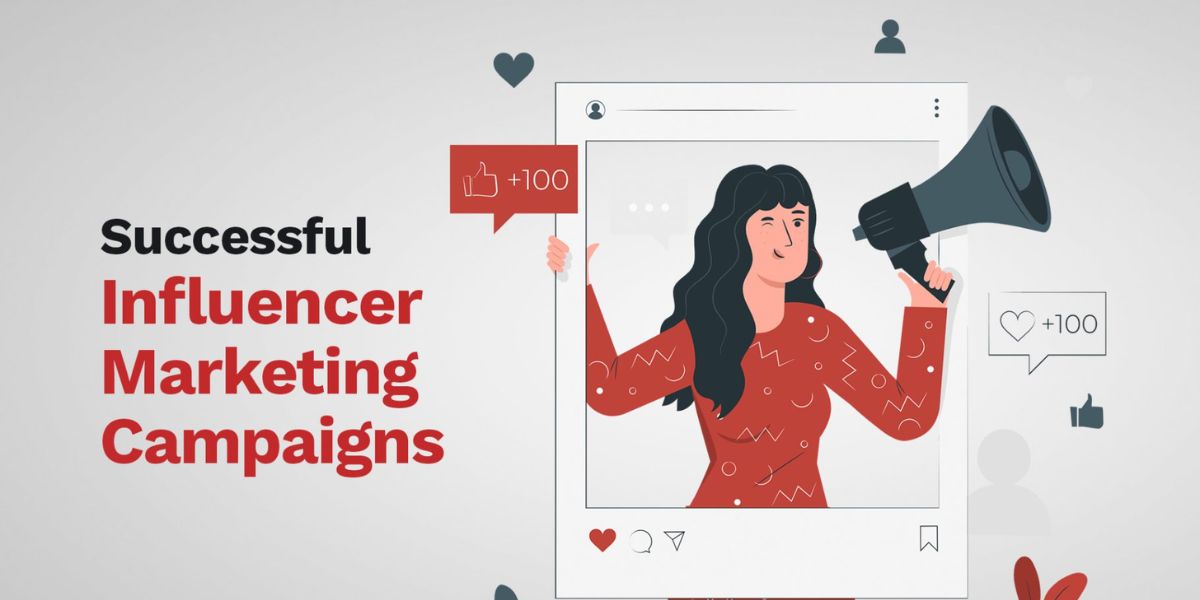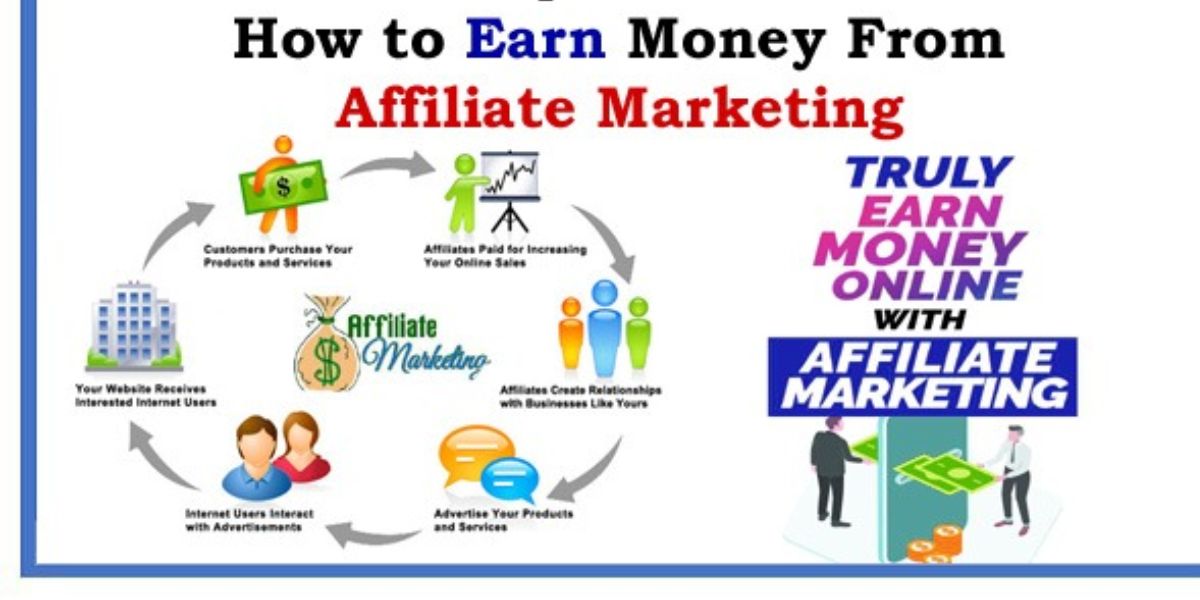Influencer Marketing Campaign: 
Influencer marketing is the cornerstone of many brand strategies. It is a unique way to connect with the target audience through trusted voices in the social media landscape. If done correctly, a huge amplification of the brand message will be achieved with an influencer with credibility and engaged followers.
Therefore, this type of campaign success depends strictly on thoughtful planning, creativity, and strategic execution. This blog will walk you through the fundamental steps to building a successful influencer marketing campaign, from understanding the basics to measuring outcomes effectively.
What is Influencer Affiliate Marketing?
Influencer Affiliate marketing involves selecting key people in a certain area and engaging them to market your products. Such people are called influencers and have fans on their sites – Instagram, YouTube, TikTok, or blogs — interested in purchasing goods or receiving services. The primary value of influencer marketing is found in influencers’ relations with their followers.
As a type of referral marketing, influencer marketing distributes brand messages in a more believable and individualized style than mainstream advertising. Getting influential people to promote your brand works well because they develop content that reaches their audience naturally, incorporating the product into their daily activities, and the audience is more likely to buy into the brand.
Influencers’ differences regarding followers’ number can be discussed – mega, macro, mid-tier, micro, and nano influencers. These factors enable brands to target uniquely aggregated demographics of the audience.
Influencer marketing is effective because it utilizes people with influence credibility and people with whom individuals interact in real life, thereby promoting brands as recommendations rather than ads. It is useful for brands that want to enter and develop certain segments, improve their perception, or achieve particular marketing objectives like raising brand recognition and generating new leads or sales.
Types of Influencers 2025

1. Mega-Influencers
Mega influencers have more than one million followers; they can be celebrities or renowned personalities. Due to their popularity, they are suitable in situations where the goal is to create brand recognition among a huge population. Despite this, such accounts might attract fewer likes as more individuals can follow and (therefore) potentially like a given post. Although mega-influencers have the biggest stake and thus can be costly, this partnership guarantees sheer audience reach and demographic diversity.
2. Macro-Influencers
Macro-influencers can also be defined as individuals with between 100,000 to 1 million followers. Most of the time they are content producers or content specialists. They have a large following and higher interaction levels than mega-influencers but less than micro and macro-influencers. Micro-influencers are ideal for companies looking to enhance reach while optimizing the type of consumers they are likely to influence in contrast to mega-influencers.
3. Micro-Influencers
There is a group of influencers with between 1000 and 100,000 followers. They are more targeted than mainstream media and considered closer to their audience and credible. Micro-influencers typically generate higher engagement levels than well-established personalities, making any brands focusing on a particular niche an excellent match for them. Their posts are always likely to be more genuine, thus gaining more trust from their audience members.
4. Nano-Influencers
Nano-influencers have below 1,000 followers. They have a small viewership but sometimes have a great interaction rate and familiar followers. This type of influencer is very suitable for a hyperlocal or niche-specific campaign, where customers’ first-name-basis treatment often equates to engagement. They’re cheap enough for smaller firms, and their reach is genuine for niche markets.
Tracking and Measuring Success 2025
Evaluation of an influencer marketing campaign is an important process in identifying how well it performs, adapting the processes, and optimizing results and return on investment. These include establishing goals and measures, employing analytics solutions, and measuring results in the goal of making changes when necessary.
1. Defining Success
Setting Clear Objectives
Before you can measure success, you must define what success looks like. Are you seeking increased brand awareness, higher engagement rates, more website traffic, or improved sales? Clear objectives will help you determine the key performance indicators (KPIs) to track. For instance, if you aim to boost brand awareness, you might focus on reach and impressions. Conversely, conversion rates will be more relevant if you want to drive sales.
Also Read: Top 10+ Best Influencer Marketing Agency in India
2. Key Performance Indicators (KPIs)
- Engagement Rates:
Engagement rates are one of the most critical metrics in influencer marketing. They measure how actively followers interact with the content, including likes, comments, shares, and mentions. High engagement rates often indicate that the content resonates with the audience, making this KPI crucial for evaluating the campaign’s impact on audience interaction. - Reach and Impressions:
Reach refers to the number of unique users who see the content, while impressions measure the total number of times the content is displayed. These metrics are essential for understanding how far your campaign’s visibility extends. A high reach can indicate effective exposure to new audiences. - Website Traffic:
Tracking the traffic driven to your website from influencer posts provides insight into how well the campaign converts social media interest into actionable visits. Tools like Google Analytics can help track referral traffic from specific influencers or platforms. - Conversions and Sales:
Many campaigns aim to drive sales or other conversions, such as sign-ups or downloads. Monitoring conversions helps determine the campaign’s direct impact on your bottom line. Use tracking links or discount codes to attribute sales accurately to specific influencers. - Follower Growth
Monitoring the growth of your social media following during the campaign period can indicate increased interest and engagement with your brand. While follower growth isn’t the sole indicator of success, it helps gauge long-term interest sparked by the campaign.
Also Read: Top 5 Tips Influencer Marketing Strategies | Get Results
Tools for Measurement 2025
1. Social Media Analytics | Influencer Marketing Campaign
Nearly all social networks have built-in analytics, allowing users to monitor reach, impressions, engagement rates, and follower acquisition. These are very useful for tracking how content in a particular niche does on various platforms.
Also Read: How To Develop Your Influencer Marketing Strategy?
2. Google Analytics
Google Analytics monitors web traffic, conversions, and users, making it easy to map how influencer marketing helps bring traffic and sales. Setting up goals and the conversion funnels are also enabled by the tool.
Also Read: Top 10+ Influencer Marketing Examples | Skyrocketed Brands
3. Influencer Marketing Platforms
Influencer Marketing Platforms are multimedia networks used to facilitate influencer marketing. Various analytical tools focus on influencer marketing by compiling information from different social media within one place. These platforms can also give more detailed information including the target consumers’ data, tone and response analysis, and the overall profitability of the campaign.
Also Read: How Influencers Earn Big with Affiliate Marketing 2025
4. Monitor and Adjust
Real-time tracking lets you make corrections to the campaign as needed. This way, you aren’t beholden to the kinds of content you’re creating or influencers you’re targeting to achieve outcomes other strategies can’t offer you. The constant analyses enable the campaign to stay on track in producing its goals and optimizing the ROI.
Also Read: Micro-influencers marketing guide | Beginners 2025
5. Report and Optimize
In the end, after the campaign or event, preparing a summary of results is recommended to see how much the chosen KPIs have been achieved. These points should be used to adjust the subsequent campaigns to make the shifts in strategies and influencers more effective. Such cyclical motion properly addresses long-term objectives in influencer marketing.
Also Read: Top 12 Easy Tips for Influencers Marketing to Succeed
Creative Campaign Ideas 2025
1. Product Reviews and Tutorials
Word of mouth or testimonials and how to use a certain product are among the best approaches to advertising. Surprisingly true this way, it enables the followers to see the end product being used and the real-life testimonies which goes a long way in shaping an opinion towards purchase.
2. Giveaways and Contests
Partner with the influencers for giveaways or contests. This increases impressions and helps the brand, as people will be more likely to make more post-visit purchases. Ensure the entry mechanics will promote user engagement to get the most traffic.
3. Unboxing Videos
Unboxing videos are very popular, especially for accessory technology, beauty products, and anything tied to lifestyle. Said influencers can also help your audience develop expectations and interest based on what the influencers say about the product.
4. Social Media Takeovers
give influencers the reigns to your brand’s social media account for a day. This can make your brand known to people who are fans of the influencer and create a new angle for your content.
5. Hashtag Campaigns
Promote a hashtag connected with your brand and inspire influencers and their audience to employ it. This can allow the building of a community and ease in monitoring user-created content related to the campaign.
6. Event Collaborations
Make yourself available for events the influencers can attend or release live updates. This is particularly useful for branding an anniversary or using Hx branding when you have a new product to market.
Legal and Ethical Considerations
1. Disclosure and Transparency
Influencers are required to reveal affiliations because they function as advertisers. This usually follows the popular practice of putting hashtags such as #ad or #sponsored whenever the post contains sponsored content. The transparency ensures that the audience has faith in the campaign and ensures that the campaign is credible.
2. Contractual Agreements
The relationship between two parties in the supply chain must be spelled out in a contract especially the details of the working relationships. This should cover the delivery of content and deliverables, schedules, fees and payment, license grants and usage, and exclusivity. When planning is more specific, there can be no confusion, and the two parties will be on the same page.
3. Intellectual Property Rights
Make sure you own a license to use the content developed by influencers. The contract should call out this, particularly if there is any allowance for repurposing such content for other marketing platforms.
4. Ethical Guidelines
Ensure that your brand is protected from the negative reputation that may come with some influencers by working with those whose principles are noble. Avoid misleading activities or creating awareness of any product that would be a risk to the audience. Ethical campaigns take a long time to create since clients must have enduring trust in the brand.
Conclusion | Influencer Marketing Campaign
A successful influencer marketing campaign is about the strategic approach, from the basics to creative ideas and measuring outcomes. Brands can use influencer marketing with the help of the right influencers, clear goals, and adherence to legal and ethical standards. This powerful tool can create meaningful connections, drive engagement, and help eventually build brand success when used correctly.




